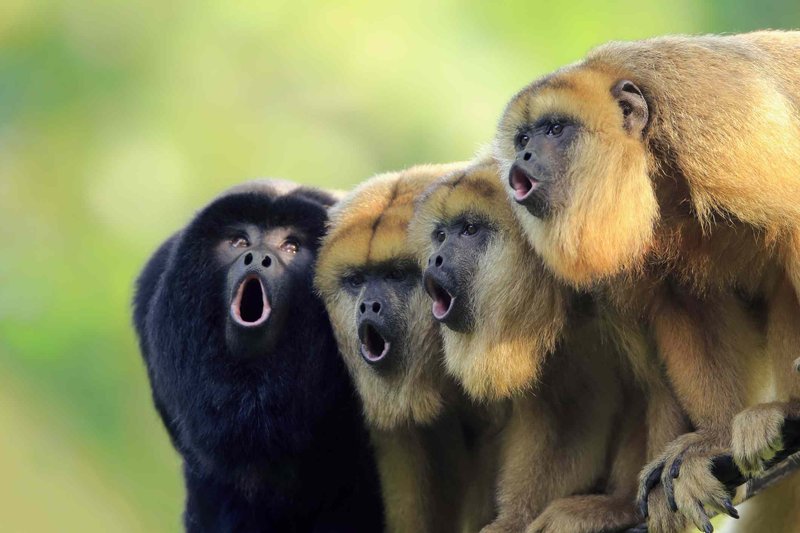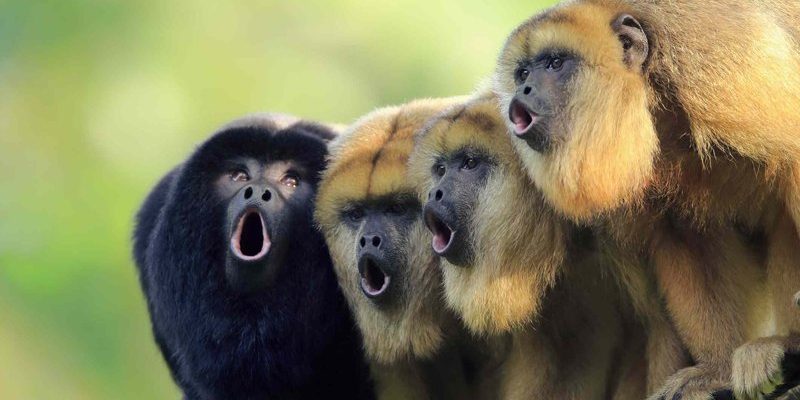
From ancient civilizations to modern interpretations, the howler monkey has woven itself into the tapestry of human experience. It’s like a character in a story that has evolved over time, adapting to different cultural contexts while still holding onto its core identity. So, let’s take a closer look at how this fascinating animal has inspired folklore and cultural representation.
Howler Monkeys in Ancient Mythologies
In many ancient cultures, animals were often seen as messengers or symbols with deeper meanings. Howler monkeys were no exception. In the myths of the Maya civilization, for example, these monkeys were considered sacred and were associated with the gods. They were believed to act as protectors of the forests and were often featured in ceremonial rituals. The howler monkey’s loud calls were interpreted as communications from the divine, a reminder of the spiritual connection between the earth and its creatures.
Additionally, the Aztecs viewed howler monkeys as symbols of strength and bravery. Their vocalizations were linked to the concept of power, and the monkeys themselves were sometimes depicted in art and sculpture, showcasing their muscular bodies and expressive features. In this way, howler monkeys weren’t just part of the landscape; they were integral to the cultural and spiritual narrative.
The Role of Howler Monkeys in Folklore
Folklore often takes the quirks of animals and transforms them into stories full of meaning. Howler monkeys have appeared in numerous tales, often embodying specific traits. For instance, in various South American stories, the howler monkey represents mischief or cunning. One popular story highlights the howler monkey’s cleverness in outsmarting predators, which resonates with the idea of using intelligence to navigate challenges.
In some cultures, howler monkeys are depicted as tricksters, much like the coyote in Native American folklore. They thrive on adventure and playfulness, leading them to engage in antics that get them into trouble. This portrayal not only entertains but also teaches lessons about the value of wit and the consequences of careless behavior. So, when you hear a howler monkey’s call echoing through the trees, remember it’s not just noise; it’s a reminder of the tales and morals passed down through generations.
Howler Monkeys and Symbolism in Art
Art is a powerful vessel for storytelling, and howler monkeys have found their way into countless paintings, sculptures, and carvings across various cultures. In many traditional artworks, howler monkeys are often portrayed in vibrant colors, reflecting their lively nature and the lush environment they inhabit. The detail put into these artworks speaks volumes about the respect and fascination these cultures have for this animal.
You might notice that in some regions, howler monkeys are depicted alongside other animals or natural elements. This representation underscores their role in the ecosystem and highlights their connection to the earth. Art not only captures their physical presence but also aims to communicate deeper meanings, often focusing on themes of life, death, and the cycle of nature. Each brushstroke or carving tells a story, capturing the interplay between humanity and wildlife.
Modern Interpretations of Howler Monkeys
Fast forward to today, and you’ll see howler monkeys continue to impact culture and media. In movies, documentaries, and literature, they’re often portrayed as playful and loud, embodying a sense of adventure. This modern representation still echoes the historical significance, reminding us that wildlife—and specifically howler monkeys—have a lasting place in our imaginations.
Moreover, howler monkeys have become symbols of conservation efforts. Many organizations use their image to promote awareness about deforestation and habitat destruction. When people connect with howler monkeys through media, they often feel a sense of responsibility to protect these creatures and their homes. This connection influences public opinion and drives activism, showcasing how animals can inspire positive change.
Howler Monkeys in Music and Dance
In some cultures, the howler monkey has even made its way into music and dance. Traditional songs may mimic their calls, celebrating the sounds of the jungle in a rhythmic format. For instance, during festivals, performers might incorporate howler monkey sounds into their dances, bringing the spirit of the jungle alive as they move.
This blend of wildlife and music offers a sensory experience, allowing people to connect with nature in an intimate way. The rhythms and movements inspired by howler monkeys can evoke feelings of freedom and joy, embodying the essence of the wild. So, the next time you hear a howler monkey in a song or see it represented in dance, recognize that it’s a call to celebrate the connections we share with the natural world.
The Significance of Howler Monkeys in Conservation
The cultural significance of howler monkeys extends into the realm of conservation. These animals are often used as flagship species in efforts to protect their habitats. Their presence indicates a healthy ecosystem, and by promoting their conservation, we also focus on preserving the rich biodiversity of their rainforest homes.
Organizations dedicated to wildlife protection often highlight the plight of howler monkeys, educating the public about the threats they face, such as habitat loss and poaching. When people understand the cultural stories and significance behind these monkeys, they’re more likely to engage in conservation efforts. It’s a beautiful cycle: the more we appreciate howler monkeys culturally, the more we feel compelled to protect them in reality.
Howler monkeys are more than just loud primates; they are steeped in cultural significance, folklore, and artistic representation. Their calls resonate through the jungles and into our stories, reminding us of the intertwined lives of humans and nature. As we explore their roles in ancient mythologies, folklore, and modern interpretations, we can see how these creatures have not only captivated our imagination but also inspired important conversations about conservation.
So, the next time you hear that distinct howler monkey call echoing through the trees, think about all the stories and meanings wrapped up in that sound. It’s not just nature making noise; it’s a cultural legacy that’s worth protecting. Let’s celebrate these magnificent animals and the richness they bring to our world.

